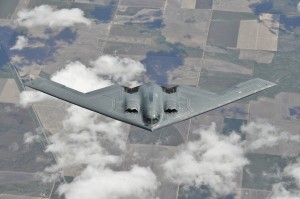
Experts Support Resizing the Nuclear Arsenal
In an era of fiscal constraint and shifting national security challenges, the United States nuclear security strategy should not be informed by anachronistic Cold War assumptions. A smaller nuclear arsenal would more effectively address today’s security threats and free up resources for critical defense capabilities.
This is one of the takeaways of a new report by the Stimson Center entitled, “A New US Defense Strategy for a New Era: Military Superiority, Agility, and Efficiency.” The report, whose defense advisory committee includes experts like ASP Consensus members Graham Allison and Amb. Richard Burt and ASP Board member Lt. Gen. Daniel Christman, argues that U.S. defense strategy and spending priorities should be realigned in light of 21st century security threats.
Updating the U.S. nuclear posture is a key part of developing a more effective defense strategy. As the report notes, “the size of US strategic nuclear forces is driven by perceived requirements to deter nuclear attacks on the US or its allies by Russia; no other nation has a comparable nuclear arsenal.”
The report recommends that “the US should reduce the size of its nuclear forces as rapidly as possible, preferable through a new treaty with Russia, and make commensurate reductions in planned nuclear modernization programs.”
Reducing the number of strategic delivery systems, delaying some modernization programs, and reducing some missile defense systems could save an estimated $60 billion over the next ten years, the report says.
Some of the experts on the report’s advisory committee argue in appended comments that the report does not go far enough in its nuclear recommendations, particularly with respect to the triad of nuclear delivery systems – bombers, submarines, and land-based missiles.
Gordon Adams, a distinguished fellow at the Stimson Center, argues for retaining only nuclear submarines, the most survivable leg of the triad. Similarly, Ambassador Richard Burt and General James Cartwright refer to their recent report calling for eliminating land-based missiles and maintaining a total stockpile of 900 warheads.
The Stimson report demonstrates that while security experts may disagree on the size and shape of the future U.S. nuclear arsenal, there is a broad bipartisan support for updating our nuclear strategy to reflect the 21st century security environment.
In addition to the signers of the Stimson report, supporters of a new nuclear posture include former Secretary of State Colin Powell, former commander of U.S. Strategic Command Gen. Eugene Habiger, and Sen. Tom Coburn (R-OK), whose recent deficit reduction plan included $79 billion in savings from eliminating unnecessary nuclear capabilities.
As Lt. Gen. Dirk Jameson (ret.), former deputy commander in chief of U.S. Strategic Command, recently wrote, “Having more weapons doesn’t mean we are ‘winning’—or will even succeed in deterring others from pursuing nuclear weapons. It merely reflects that our nuclear strategy is ill-suited to our times.”
Maintaining unnecessary nuclear capabilities diverts resources from critical defense programs. The U.S. must eliminate Cold War nuclear capabilities and invest instead in a defense strategy for the 21st century.







[…] Experts Support Resizing the Nuclear Arsenal […]
…Websites you should visit…
[…]I am no longer certain the place you’re getting your information, but great topic.[…]…
…Awesome website…
[…]you make blogging glance[…]…